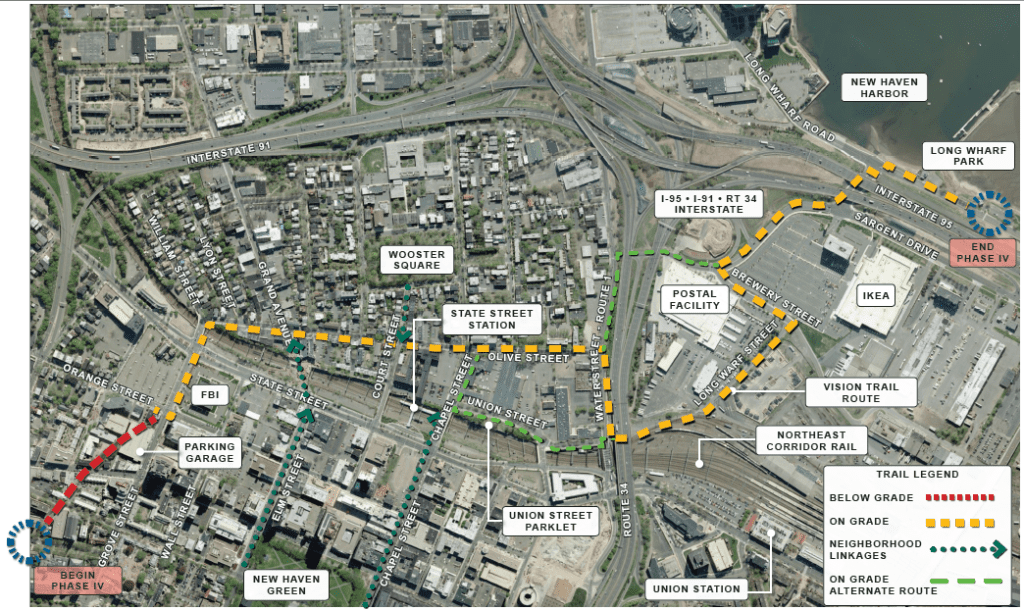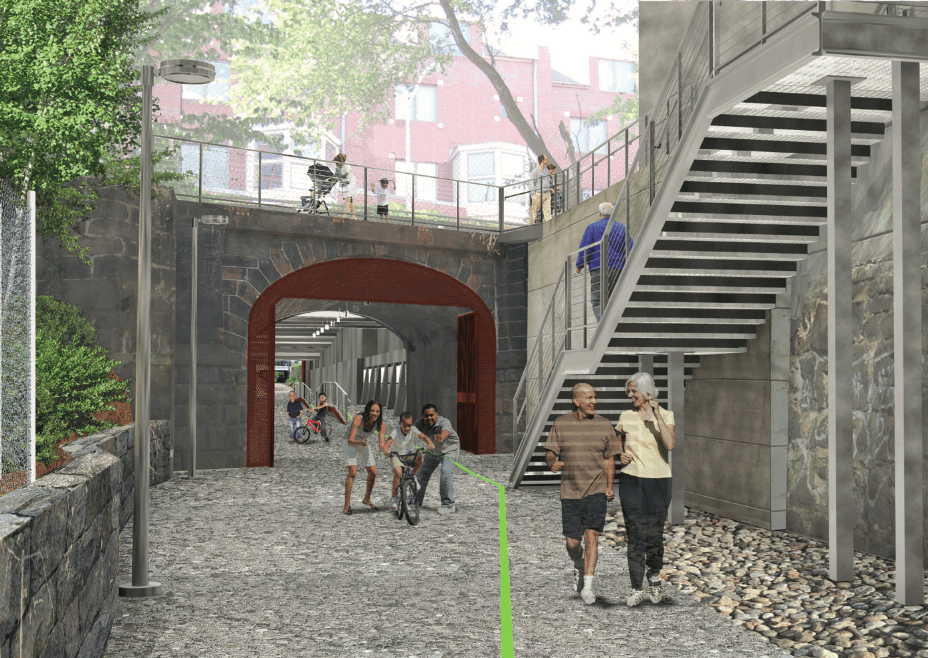After nearly ten years, the fourth phase of the Farmington Canal Greenway project has finally begun. When completed, the trail will connect New Haven all the way up to Massachusetts.
“This is a big moment for anyone who cares about having a robust bicycle pedestrian network in New Haven, and a big moment for anyone invested in making New Haven a vibrant place to live,” said Aaron Goode of New Haven Friends of the Farmington Canal Greenway. The trail currently ends at Temple Street. Phase four will extend the bicycle and pedestrian trail to Long Wharf.
Vincent Federico, vice president of CJ Fucci Construction, said the project should be completed within two years.
“We’ve done several other pieces of the Farmington Canal Trail, but this is the most unique one because of its location, a good portion of which is underground,” Federico said. “That’s particularly challenging for us, but we thrive on those types of projects. When it’s all done, it’s going to be a nice addition to New Haven.”

Even after just two weeks of construction, the removal of debris between the Temple Street Bridge and the intersection of Grove and Orange Streets has already revealed the original, 1820s masonry on the canal retaining walls, just one part of the history project leaders hope to highlight for visitors.
William Lanson, a Black community leader in New Haven, was hired to construct the New Haven section of the Farmington Canal in 1825. Lanson, who later helped enslaved runaways on the Underground Railroad, also completed the final, 1350-foot extension of Long Wharf, which allowed for the docking of larger cargo ships.
“He did most of the masonry on those retaining walls, and is an incredibly important figure in New Haven history whose story will be able to be told through the Farmington Canal project,” Goode said.

Dean Sakamoto, the designer and architect of the tunnel section, called it a “very special site.”
“The Farmington Canal was quite an engineering feat back in the day, and the railroad ran through that trail you see in New Haven from the early 1800s until the late 1900s,” Sakamoto said. “This project will give the citizens of New Haven a great sense of their city’s history, and how it connects to the rest of New England.”
Goode said the goal is to “make this section of trail a real showpiece, with professional landscaping, beautiful lighting design, and historic plaques,” and said he hopes the final product will be reminiscent of New York City’s High Line. He also said the project should be seen as far more than just historical and recreational, as the already-built trail is vital for transportation to and from work.

According to the University of Connecticut’s Connecticut Trail Census, average hourly use of the New Haven component of the Farmington Canal Heritage Trail peaks at 5 p.m.
“A lot of people use this trail for commuting to their jobs at Yale or to go to school, so it’s not just going out and riding for recreation on weekends,” Goode said. “It’s going to connect downtown New Haven to the rest of the city.”
Banner image credit Dean Sakamoto Architects LLC

